Valfride Nascimento
Toward Advancing License Plate Super-Resolution in Real-World Scenarios: A Dataset and Benchmark
May 09, 2025Abstract:Recent advancements in super-resolution for License Plate Recognition (LPR) have sought to address challenges posed by low-resolution (LR) and degraded images in surveillance, traffic monitoring, and forensic applications. However, existing studies have relied on private datasets and simplistic degradation models. To address this gap, we introduce UFPR-SR-Plates, a novel dataset containing 10,000 tracks with 100,000 paired low and high-resolution license plate images captured under real-world conditions. We establish a benchmark using multiple sequential LR and high-resolution (HR) images per vehicle -- five of each -- and two state-of-the-art models for super-resolution of license plates. We also investigate three fusion strategies to evaluate how combining predictions from a leading Optical Character Recognition (OCR) model for multiple super-resolved license plates enhances overall performance. Our findings demonstrate that super-resolution significantly boosts LPR performance, with further improvements observed when applying majority vote-based fusion techniques. Specifically, the Layout-Aware and Character-Driven Network (LCDNet) model combined with the Majority Vote by Character Position (MVCP) strategy led to the highest recognition rates, increasing from 1.7% with low-resolution images to 31.1% with super-resolution, and up to 44.7% when combining OCR outputs from five super-resolved images. These findings underscore the critical role of super-resolution and temporal information in enhancing LPR accuracy under real-world, adverse conditions. The proposed dataset is publicly available to support further research and can be accessed at: https://valfride.github.io/nascimento2024toward/
Enhancing License Plate Super-Resolution: A Layout-Aware and Character-Driven Approach
Aug 27, 2024



Abstract:Despite significant advancements in License Plate Recognition (LPR) through deep learning, most improvements rely on high-resolution images with clear characters. This scenario does not reflect real-world conditions where traffic surveillance often captures low-resolution and blurry images. Under these conditions, characters tend to blend with the background or neighboring characters, making accurate LPR challenging. To address this issue, we introduce a novel loss function, Layout and Character Oriented Focal Loss (LCOFL), which considers factors such as resolution, texture, and structural details, as well as the performance of the LPR task itself. We enhance character feature learning using deformable convolutions and shared weights in an attention module and employ a GAN-based training approach with an Optical Character Recognition (OCR) model as the discriminator to guide the super-resolution process. Our experimental results show significant improvements in character reconstruction quality, outperforming two state-of-the-art methods in both quantitative and qualitative measures. Our code is publicly available at https://github.com/valfride/lpsr-lacd
Super-Resolution of License Plate Images Using Attention Modules and Sub-Pixel Convolution Layers
May 27, 2023

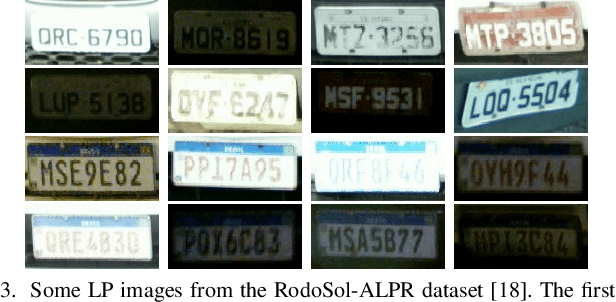
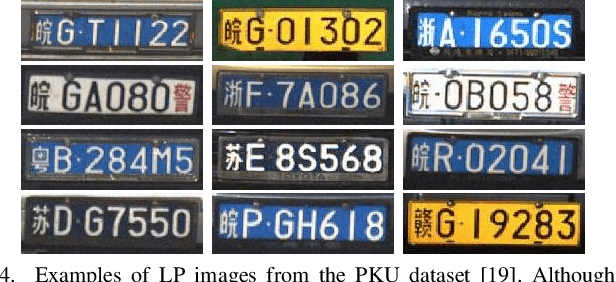
Abstract:Recent years have seen significant developments in the field of License Plate Recognition (LPR) through the integration of deep learning techniques and the increasing availability of training data. Nevertheless, reconstructing license plates (LPs) from low-resolution (LR) surveillance footage remains challenging. To address this issue, we introduce a Single-Image Super-Resolution (SISR) approach that integrates attention and transformer modules to enhance the detection of structural and textural features in LR images. Our approach incorporates sub-pixel convolution layers (also known as PixelShuffle) and a loss function that uses an Optical Character Recognition (OCR) model for feature extraction. We trained the proposed architecture on synthetic images created by applying heavy Gaussian noise to high-resolution LP images from two public datasets, followed by bicubic downsampling. As a result, the generated images have a Structural Similarity Index Measure (SSIM) of less than 0.10. Our results show that our approach for reconstructing these low-resolution synthesized images outperforms existing ones in both quantitative and qualitative measures. Our code is publicly available at https://github.com/valfride/lpr-rsr-ext/
Combining Attention Module and Pixel Shuffle for License Plate Super-Resolution
Oct 30, 2022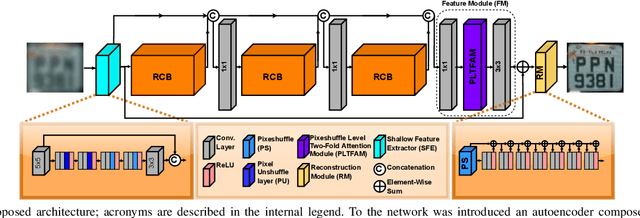
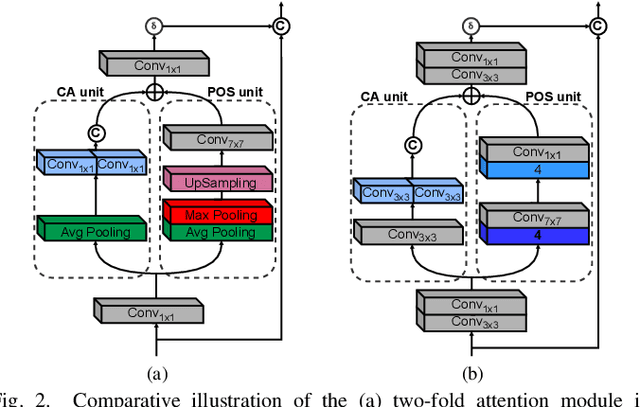
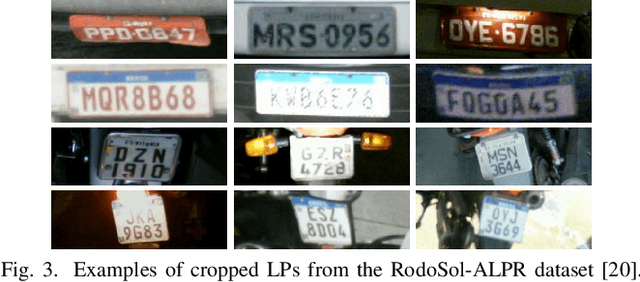
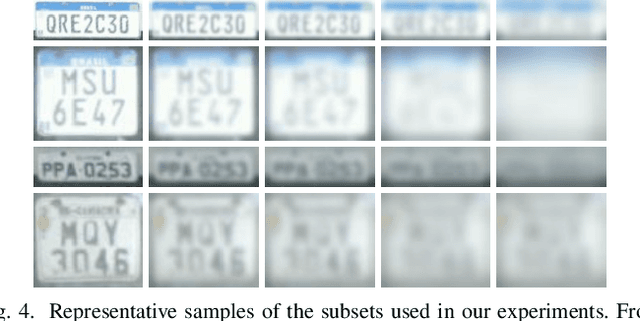
Abstract:The License Plate Recognition (LPR) field has made impressive advances in the last decade due to novel deep learning approaches combined with the increased availability of training data. However, it still has some open issues, especially when the data come from low-resolution (LR) and low-quality images/videos, as in surveillance systems. This work focuses on license plate (LP) reconstruction in LR and low-quality images. We present a Single-Image Super-Resolution (SISR) approach that extends the attention/transformer module concept by exploiting the capabilities of PixelShuffle layers and that has an improved loss function based on LPR predictions. For training the proposed architecture, we use synthetic images generated by applying heavy Gaussian noise in terms of Structural Similarity Index Measure (SSIM) to the original high-resolution (HR) images. In our experiments, the proposed method outperformed the baselines both quantitatively and qualitatively. The datasets we created for this work are publicly available to the research community at https://github.com/valfride/lpr-rsr/
 Add to Chrome
Add to Chrome Add to Firefox
Add to Firefox Add to Edge
Add to Edge